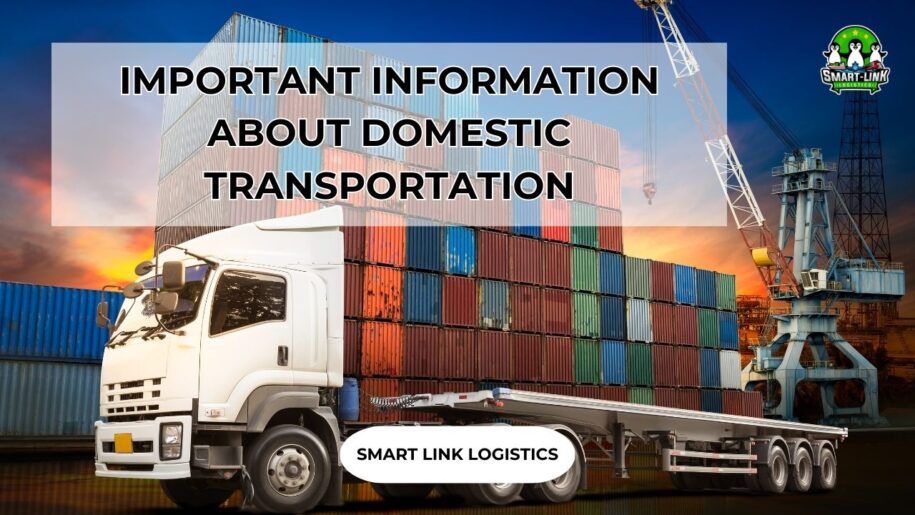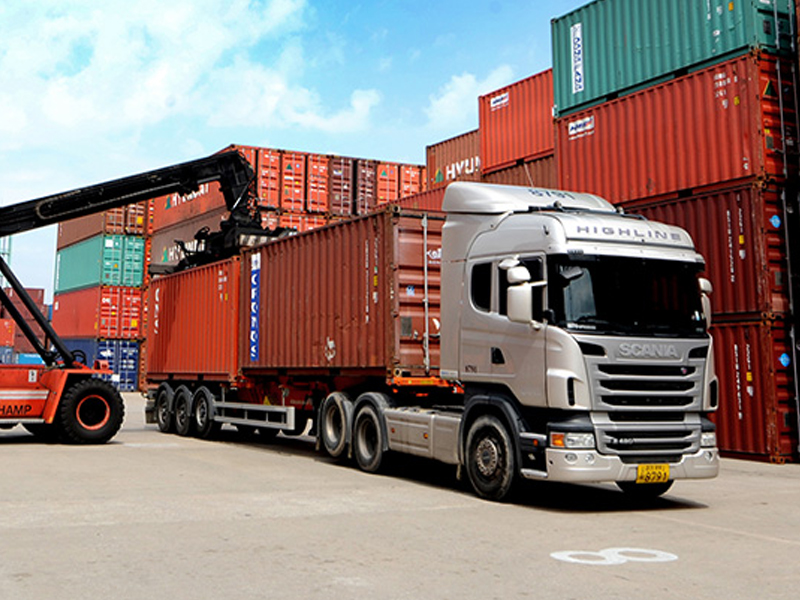
IMPORTANT INFORMATION ABOUT DOMESTIC TRANSPORTATION
Join Smart Link Logistics to explore the process and benefits of domestic transportation in detail in the article below!
What is Domestic Transportation?
Domestic transportation involves the movement of goods within a country using various means such as trucks, trains, and ships. This service allows you to transport goods from the port to any desired location, such as warehouses, distribution centers, or other destinations.

Key Considerations for Domestic Transportation
Domestic transportation is a complex system requiring the coordinated management of many elements, from planning road networks and managing fleets to building modern logistics centers. Selecting the appropriate transportation method for each type of cargo and each route is a challenge that requires experience and deep market knowledge. As competition intensifies, transportation companies are seeking technological solutions to optimize processes, reduce costs, and improve operational efficiency.
Common Types of Domestic Transportation
- Road Transportation
Road transport stands out for its flexibility and wide accessibility. With a diverse range of vehicles, it can handle goods of all sizes and weights. However, road transport is subject to various factors such as traffic and weather conditions, and it often incurs higher costs for long-distance hauls. - Domestic Rail Transportation
Rail transport excels in its capacity to handle heavy, bulky, and large quantities of goods. However, its flexibility and delivery times are areas that still need improvement. - Inland Waterway Transportation
Waterway transport, which includes rivers and canals, is an optimal choice for transporting large quantities of goods that don’t require urgent delivery, such as raw materials and heavy industrial products. With low transportation costs, waterway shipping plays a vital role in reducing product prices and promoting trade. However, slow transport times and limited access points are factors to consider. - Air Transportation
Air transport delivers goods to recipients at the fastest possible speed, making it especially suitable for high-value or perishable items. Though more expensive than other methods, its ability to meet stringent requirements for time and product safety makes air transportation a preferred choice.
The Domestic Transportation Process
- Receiving Information: Customers provide complete details about the goods (type, weight, size, etc.) and pick-up/delivery locations via phone or email. The transportation staff will offer consultation and answer any questions.
- Quotation: Based on the information provided by the customer, the transport company will calculate and provide a detailed quotation.
- Arranging Pick-up and Delivery: If the customer agrees to the quote, the company will arrange for a vehicle to pick up the goods from the specified location and issue a delivery receipt.
- Transportation: Goods are transported to the recipient’s address according to the agreed schedule.
- Delivery and Payment: Upon arrival at the destination, the recipient inspects and signs for the goods. The customer then pays the transportation fee as per the initial agreement.
To ensure goods are transported safely, cost-effectively, and efficiently, selecting the appropriate domestic transportation method is essential. Through the information shared by Smart Link Logistics, we hope readers have gained an overview of the various transportation methods and can make the most informed decision. If your business is looking to expand into international markets, choose Smart Link. We are committed to providing optimal export services and solutions, backed by over 13 years of experience in the transportation industry.
Hotline: + 84 935 766 039 to know more about our services

If you require assistance with international import and export of goods, please contact our team at Smartlink Logistics. We are available to provide you with professional guidance on our services and the necessary customs procedures.
SMART LINK: BEST SERVICE BEST YOU


































